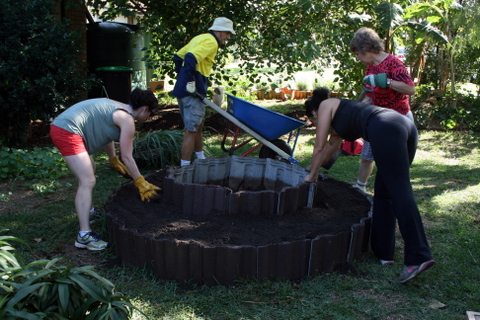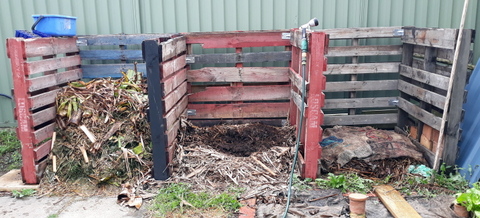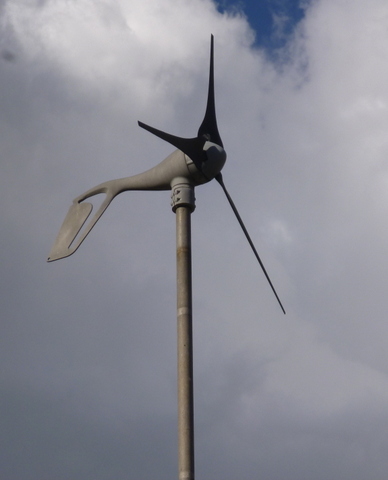A decent sized, greenfield bush block that we can place a dwelling on and design ourselves using permaculture principles seems to the ideal situation for many permies. Certainly my idea was to learn as much as I could while living on our 600m2 suburban block before ‘heading bush’ back in the ‘80s. But the long and the short of it is, we are still here.
David Holmgren makes the point that “even in Permaculture Design Courses there tends to be a focus on ‘clean slate’ design..” (RetroSuburbia pg. 24). Yet the most sustainable house/block is the one we are living in/on now. That coupled with the fact that Australia has a very urbanised population (around 90%), maybe we should be concentrating on ‘permaculturing’ our urban and suburban spaces rather than planning to ‘head bush’.
That was the conclusion that I came to over 20 years ago that it was more important for us, and made more sense to remain in the ‘burbs and see what we could do there rather than bolt for the back-blocks.
From my experience there are some distinct advantages (benefits) and disadvantages (challenges) to taking this approach, and this is what I have found -
Suburban Permaculture – Five Benefits and Four Challenges
Five benefits
People – with a higher population density people might be part of the problem but they are also part of the solution. Friends, neighbours, family and local permaculture groups provide more opportunities to work together with others to help develop your permaculture front (and back) yard, build community and culture, and generally get stuff done. There are also people who will walk past your productive property who you can share produce and information with, and invite them to your permaculture group. (Don’t have a local permaculture group? Why not start one! Check here).
Permaculture Sydney West blitz at our place
organic matter – The local environment can produce lots of organic matter for you to compost, use as mulch or feed to your worms. Leaves, grass clippings, veg waste, wood chips are available in your local area from your friends and neighbours and by working with them you can help return all this organic matter to the soil thereby increasing its fertility and productivity. A few years ago, there was a local tree lopper who would drop loads of wood chips on some unused land near our place, and I would regularly harvest this tree waste and use it in our garden. You can contact local arborists and get wood chips delivered free, you get a resource and the wood chips stay out of land fill, everybody wins!
Variety of microclimates – There are lots of variations available in terms of microclimates in the built environment. Buildings provide microclimates that are shaded, warmed by their thermal mass or dampened by runoff from their rooves. Thermal mass can also be provided by pools, ponds and water tanks. These same houses, sheds and fences will also modify the effect of winds, reducing or increasing air movements depending on how they interact with other aspects of microclimates.
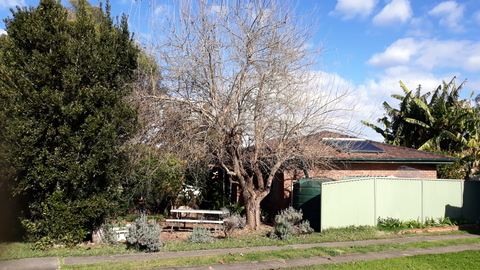
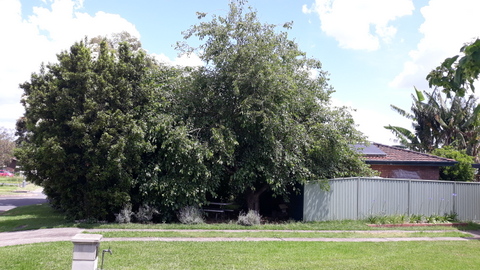
The mulberry tree - summer and winter
Water - Rainwater and greywater – With the runoff from houses and shed rooves, rainwater tanks and other options like raingardens, drain chimneys or soakwells can store, or make direct use of rainwater to help it slow, spread and sink. Rainwater from tanks can also take the place or reticulated water for keeping crops and ornamentals watered as well as being used inside the suburban house. Greywater is also an abundant suburban resource that can be put to use rather than removed from site for treatment, either directly or through a small constructed wetland for greywater treatment.
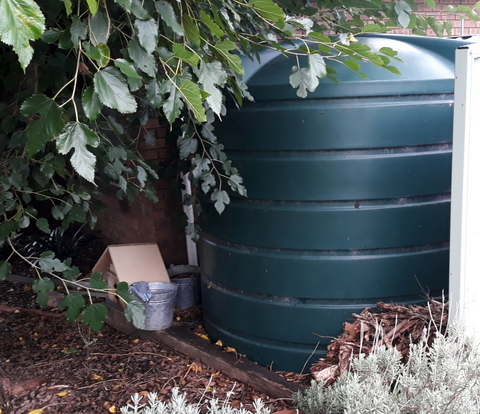
One of our water tanks
Proximity to services – For the most part, whatever you want, be it groceries, tools, plants, building materials, power or expertise, whatever you need it will be easier to access in the urban and suburban landscape. All of the permaculture projects designed to help you live a more sustainable life will require inputs and they will be more easily accessible in the ‘burbs.
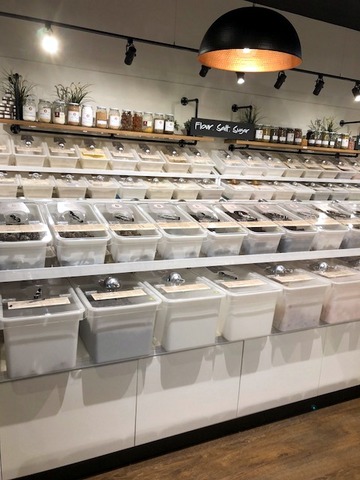
Living near a pacakging free store can be very handy
Four Challenges
Rules – Like it or not, we are subject to three levels of government (local, state and federal) but the local council is the level most likely to have an impact on how we live our permaculture life, and they are most likely to become involved as a result of a neighbour complaining about your activities. This is where the ‘social license’ comes in and how actively developing community in your area and working positively with your neighbours can pay off by allowing you to fly under the radar.
Twenty years ago, I wanted to install a wind generator on the roof of the garage, but it was somewhat large and heavy and would have required serious engineering. Proactively I contacted the council, but just to inspect things would cost me almost as much as the wind generator itself. I refigured things and got a much smaller and more efficient unit, okayed it with the neighbour on that side and installed it. There were no problems with the neighbour or the council for the entire time it was in and running, and I decommissioned the unit in 2019.
Land size – We live on a 600m2 block which, when we bought it over 45 years ago, was a small block. Now it is a large one! I have driven through some of the new subdivisions where the block sizes are half ours or less and the houses are monstrous. This does reduce the amount of land available for growing and other activities, but it does encourage creativity in the use of space and technology.
Shade – While this can be a positive in small areas and can increase the variety of microclimates available, it can also be a challenge where the shade finds you from a source which you have no control over. This may be large trees on a neighbour’s property, especially to the north or west of your block, reducing sun access and thereby limiting your growing potential, or a neighbour redeveloping their house from a single storey into a two-storey house and shading out your solar panels or solar hot water. This is also a case where working with your neighbours may gain a positive outcome. Sometimes, though, for example where large trees that have been there a long time and are protected by council, it will require creativity to make the best use of what sun access you do have, including perhaps delawning your front yard.
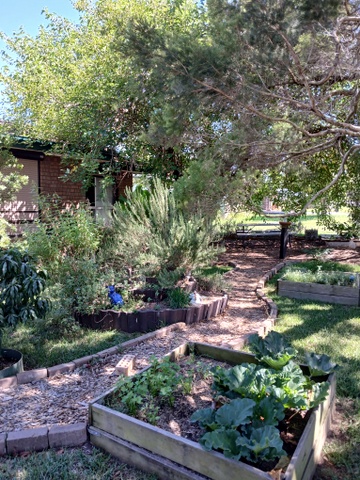
Delaning the front yard can open up options
Pollution – This can be a difficult problem depending on where it is that you are located. It may be an old house that has been on a main road, with possibilities for lead from petrol or old paint and/or asbestos. It may be a new development which is being built on what was an old industrial area. This should have been remediated, but it is best to check yourself (not that I don’t trust developers…… I just don’t trust developers!). There may be ongoing pollution from currently operating mining or manufacturing facilities close by. In all cases it is best to arrange for soil testing to understand if there is a problem and if so, what it is and what the options are. If it is not practical to remove or remediate contaminated soil, growing in raised or wicking beds can be a way of producing food independent of the contaminated soil.
It is important to look at all aspects of a site when undertaking the zone and sector analysis for a project, but when the project is a suburban based one it is vital to include both the benefits and challenges of suburban living in the analysis.


